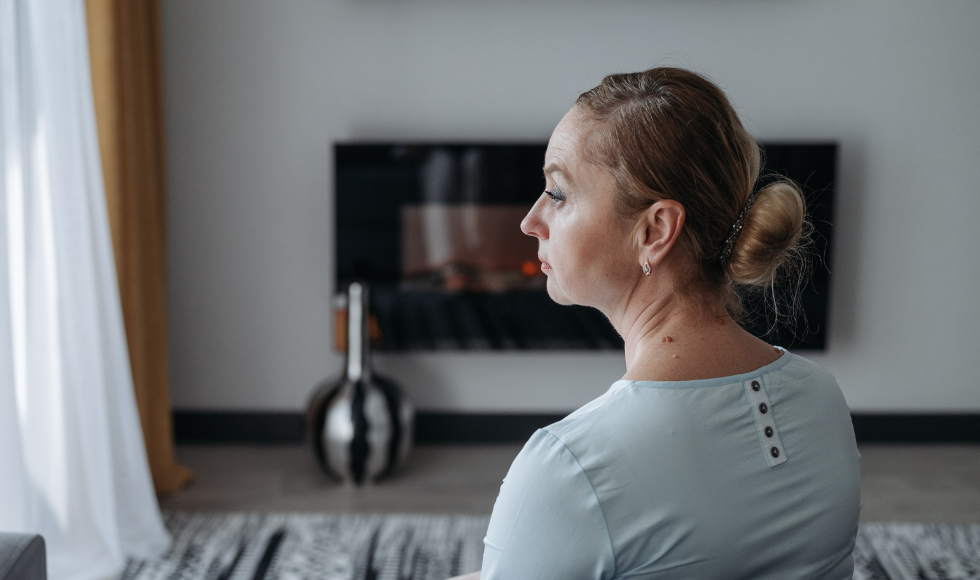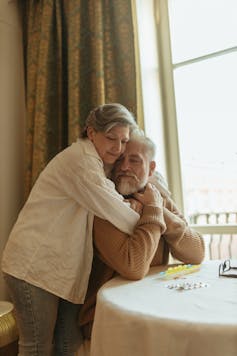Analysis — Life after a stroke: Who’s caring for the caregivers?

Caregivers may neglect their own health because they do not have time or energy to care for themselves. (Pexels/Pavel Danilyuk)
BY Anna Garnett, Western University; Maureen Markle-Reid, McMaster University, and Patricia H Strachan, McMaster University
June 29, 2022
Stroke is a major cause of disability in Canada. More than 50,000 Canadians have a stroke every year and about 40 per cent of those will live with lasting effects of stroke on their health. Once a person living with stroke returns home, up to 80-90 per cent of the care at home is provided by family and friends, known as informal caregivers.
Caregiving can be a wonderful and rewarding experience. However, when caregiving continues over months and years, it can become difficult and a caregivers’ own health may begin to suffer.
In order to better support caregivers, we sought to understand the considerations they made when choosing to access and use supportive services. Our research entailed conducting interviews with stroke caregivers and health providers. This enabled us to better understand their experience as caregivers and helped us to identify what helped or hindered their ability to find and use suitable supports.
Stroke and the brain
A stroke occurs when blood flow to the brain is interrupted by a blocked blood vessel or when a blood vessel in the brain tears. As a result, part of the brain is damaged.
In the most severe cases, a stroke causes death. In other situations, the impacts on a person’s health will vary. Some people have mild effects from a stroke, such as weakness or numbness in a particular area of their body that will quickly return to normal.
However, in moderate to severe strokes, the effects of a stroke can last and may even be permanent. These effects can include depression and anxiety, mobility issues such as paralysis, communication and swallowing difficulties, changes in personality and cognitive abilities, and prolonged fatigue.
Life after a stroke

Following treatment in hospital, people living with the effects of a stroke will need rehabilitation services, which are offered in inpatient and outpatient facilities. In the case of outpatient rehabilitation, the person living with stroke usually lives at home and attends a program two to five days per week for a period of at least eight weeks. Caregivers often attend too, as support for the person living with stroke, and to learn about stroke management.
Depending on the needs of the person living with stroke, caregivers may help with dressing and washing and provide support with mobility, communication and many other tasks. Becoming a caregiver is a huge adjustment and can be overwhelming. Over time, caregivers may become more comfortable with caregiving and find it rewarding, but caregiving can also take a toll on their health.
Our study confirmed that some caregivers experience depression, particularly if they cannot take part in activities such as socializing with friends or exercising. In some cases, their social networks change because people are uncomfortable or unfamiliar with the impacts of stroke, and friendships are lost. Caregivers may also neglect their own health because they do not have time or energy to care for themselves.
Programs and barriers
There are services available that help caregivers and the person living with stroke. Supportive programs include homecare, caregiver support meetings, community-based day programs and overnight respite. These services provide rehabilitation, exercise and social engagement to the person living with stroke, and enable the caregiver to take a break from their caregiving role or seek support from other caregivers.
Using these services may also enable the caregiver to take care of other responsibilities, like groceries or managing their own health by attending appointments, socializing or engaging in physical activity. However, many caregivers are not aware of what services exist or are not able to use these services.
Some community-based programs cost money and the person living with stroke may need specialized transportation that also comes with a cost. Sometimes a caregivers must leave their job or the person living with stroke can no longer work, resulting in loss of income. Over time, costs can become prohibitive.
Our study found that caregivers may not be able to leave the person living with stroke alone in order to attend a support group. The caregiver may be reluctant to accept support because they do not trust that the person living with stroke will be adequately cared for when they are away.
It can be hard for caregivers to find out about services. This means many caregivers do not use these services and continue to manage their caregiving responsibilities alone, even though they might benefit from the services.
Supporting caregivers

Better policy and programs are required to support these caregivers and help them to maintain their health and well-being. Our research suggests possible improvements to existing policy and programs might include:
- Increased availability of accessible community-based health and social services, such as health and wellness activities for caregivers offered at the same time and place as programs for persons living with stroke, and hybrid caregiver support meetings that offer online alternatives to in-person gatherings.
- Support to navigate the health system to identify and access services.
- Increased access to financial aid for caregivers, such as enhanced subsidies or income tax reductions.
- Changes to health-care policy to emphasize ongoing family-centred care within community settings. This will help foster trust between caregivers and health providers, facilitate early detection of caregiver concerns and provide more opportunities for caregivers to access services.
- Improved funding and availability of community-based health professionals such as social workers, nurses, occupational therapists, physiotherapists, speech language pathologists and recreation therapists.
Stroke caregivers provide critical care and support to enable people living with stroke to live at home in the community. More needs to be done to formally recognize and support caregivers in engaging in this important task without sacrificing their own health and well-being.![]()
Anna Garnett, Assistant Professor, Arthur Labatt Family School of Nursing, Faculty of Health Sciences, Western University; Maureen Markle-Reid, Professor and Canada Research Chair in Person Centred Interventions for Older Adults with Multimorbidity and their Caregivers, School of Nursing, McMaster University, and Patricia H Strachan, Associate professor, McMaster University. This article is republished from The Conversation under a Creative Commons license. Read the original article.


